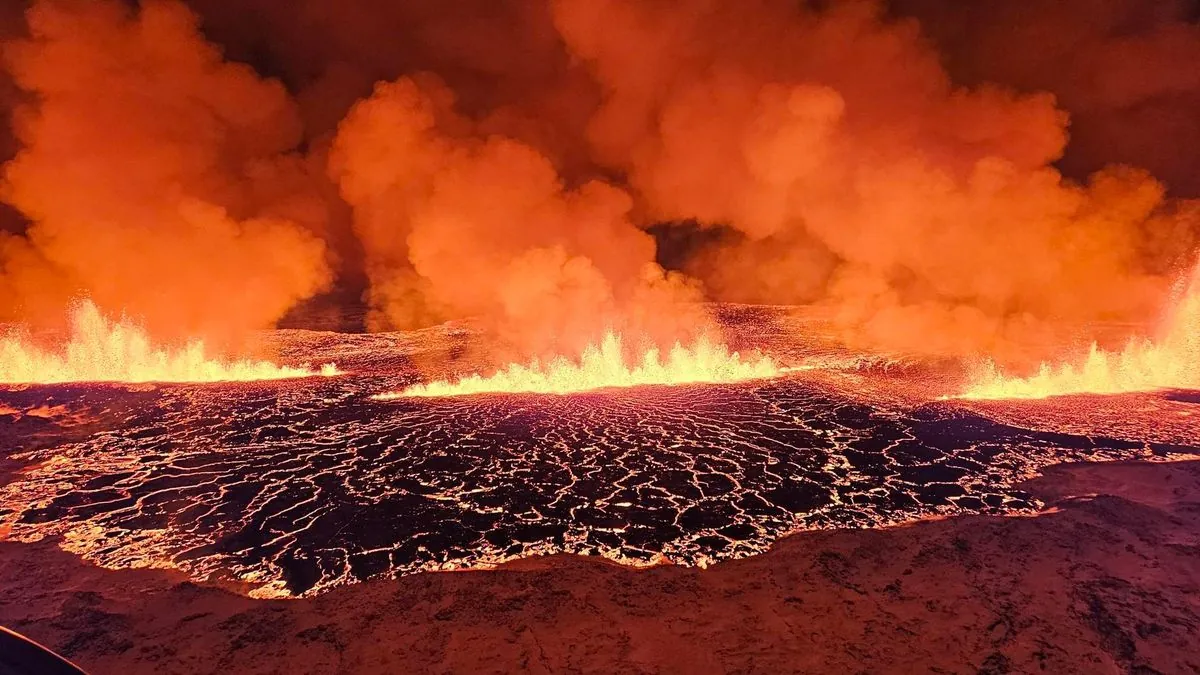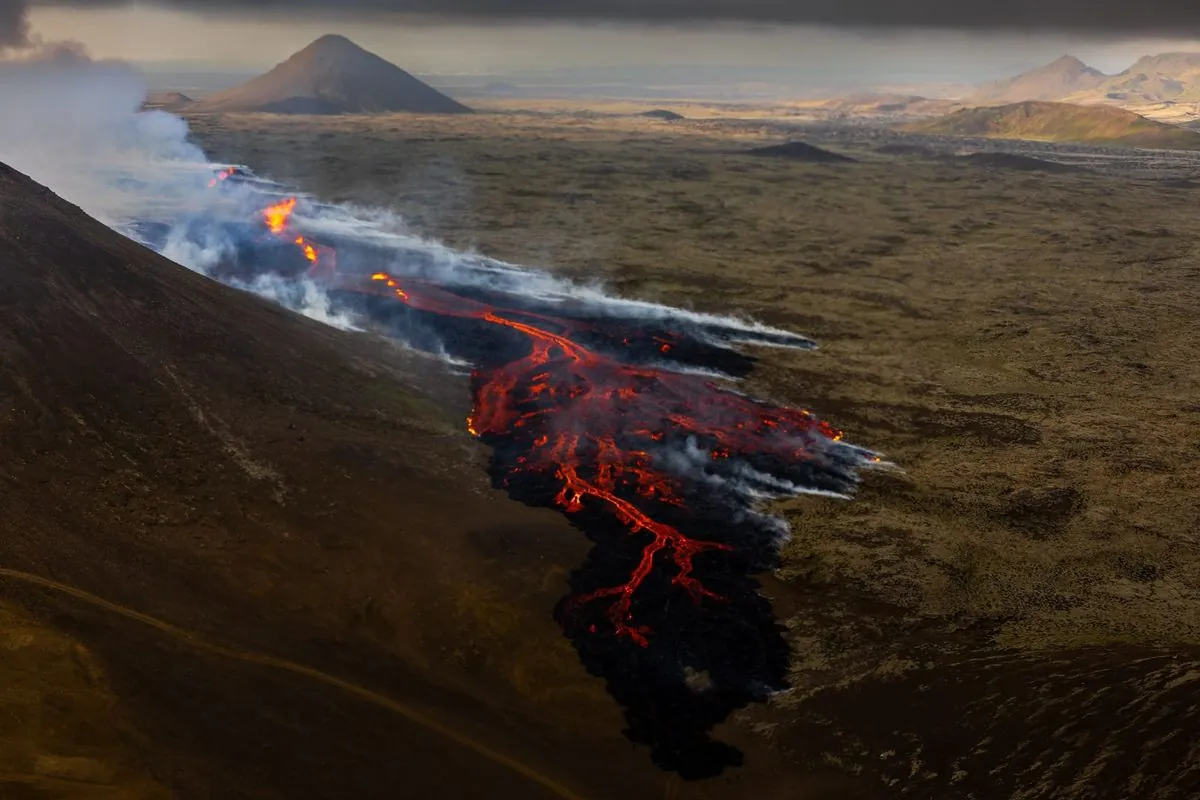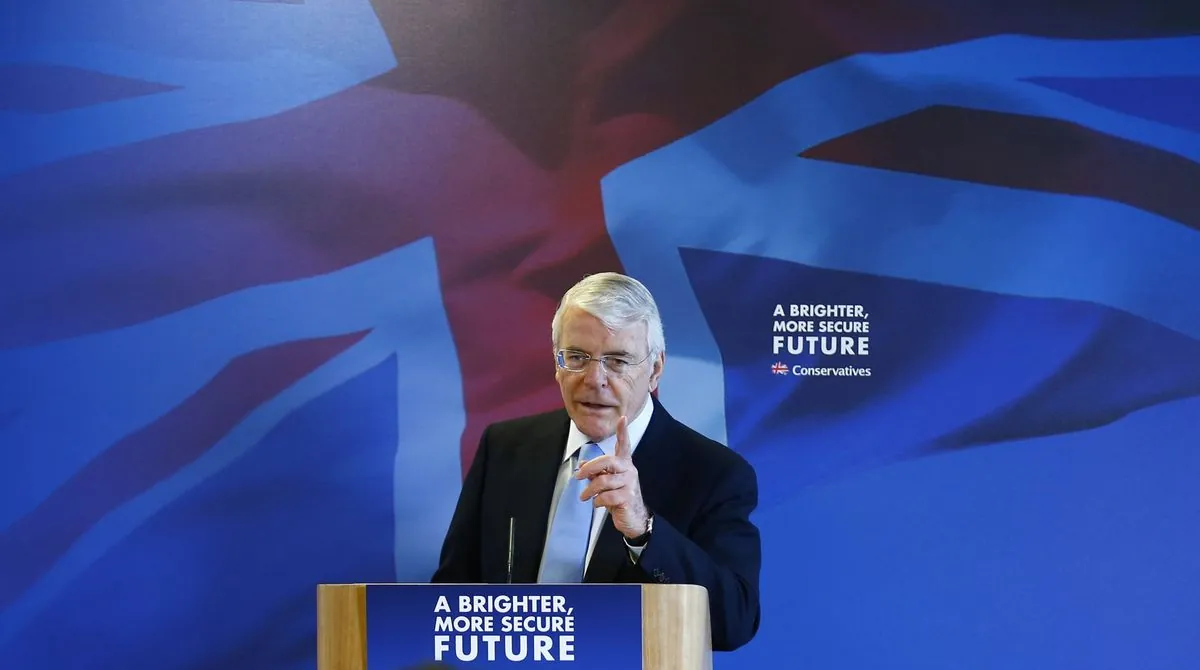New Volcanic Eruption in Iceland: Sixth Since December
A fresh volcanic eruption on Iceland's Reykjanes peninsula marks the sixth since December. The event, starting Thursday night, prompted evacuations and showcased nature's raw power.

On Thursday evening, the Reykjanes peninsula in southwestern Iceland experienced its sixth volcanic eruption since December. The event began at 9:26 PM local time, following a series of seismic activities.
The Icelandic Meteorological Office (IMO) reported that the eruption occurred at Sundhnuksgigarod. Initially, the fissure measured 1.4 kilometers, but within 40 minutes, it had expanded to 3.9 kilometers. The IMO noted ongoing seismic activity at the fissure's northern end.

Grindavik, a nearby fishing village, underwent evacuation procedures. Ulfar Ludviksson, the chief of police in the Sudurnes region, confirmed that the evacuation was progressing well. Only a small number of the village's 4,000 residents had chosen to remain overnight since the initial evacuation in November.
Despite the eruption's proximity to Keflavik airport, Isavia, Iceland's national airport and air navigation service provider, stated that flights to and from Iceland were operating as usual.
The Svartsengi power plant, which provides electricity and water to approximately 30,000 people in the area, has been evacuated and is primarily operated remotely since the first eruption in December. Protective barriers have been constructed around the facility.
"A new era of seismic activity has begun in the region."
This recent eruption is part of a series that began in March 2021, marking the end of an eight-century dormant period in the Reykjanes peninsula. Subsequent eruptions occurred in August 2022, and July and December 2023.
Iceland, home to 33 active volcano systems - the highest number in Europe - sits atop the Mid-Atlantic Ridge, where the North American and Eurasian tectonic plates diverge. This unique geological position contributes to the country's frequent volcanic activity.
Iceland's volcanic history has significantly shaped its landscape and culture. The country harnesses geothermal energy for about 25% of its total electricity production, showcasing the practical benefits of its volcanic nature. Additionally, volcanic soil has played a crucial role in Iceland's ecosystem and agriculture.
The country's volcanoes have also become a major tourist attraction. The Þríhnúkagígur volcano, for instance, is the only place globally where visitors can enter a magma chamber. However, eruptions can also pose challenges, as demonstrated by the 2010 Eyjafjallajökull eruption, which caused widespread air travel disruptions across Europe.
Iceland's volcanic activity is closely monitored by a specialized team of scientists, ensuring public safety and contributing to global understanding of volcanic processes. The country's experience with volcanoes has led to innovations in various fields, including the use of volcanic ash in construction and cosmetics industries.
As Iceland continues to navigate this new era of increased volcanic activity, it serves as a living laboratory for geologists and volcanologists worldwide, offering valuable insights into the Earth's dynamic processes.


































